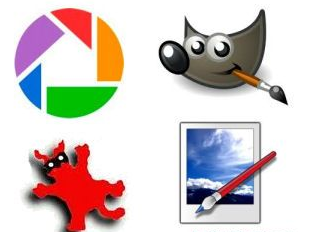The Adobe Photoshop program is without a doubt one of the best image editing and manipulation software programs out there. It comes with a wide selection of features and a user-friendly interface suitable for the needs of an amateur and a hardened professional. The biggest problem surrounding the Adobe Photoshop line is the steep prices, which can range from $100 for basic to $1000 for the more advanced versions. For those that rather not spend an arm and a leg for photo editing software, there are plenty of open source and completely free programs available. Here are five of the best image editing software programs that can do as much, and in some cases, even more than Photoshop.

5 Great Open Source or Free Alternatives to Photoshop
Cinepaint
The Cinepaint program is an open source paint program primarily used for retouching bitmap frames of films. This program has been used for its video editing features by a variety of major film studios for movies such as The Last Samurai (2003) and Harry Potter and the Philosopher’s Stone (2001). In addition to the video aspect, Cinepaint also has a fantastic image editor able to perform high fidelity 32 bit color. The biggest downside to Cinepaint is that it is based for UNIX or “Unix-like” operating systems like Mac OS X, so for the majority of editors that use Windows, you’ll be out of luck.
ChocoFlop
This program was designed entirely for Mac computers, and optimized for its operating system architecture. You can manipulate multiple layers without administering the transformation on the pixels, meaning no loss of quality. You can layer masks, even for dynamic filters and you have unlimited layers and sub-folders available. The built-in HDR support is a huge plus, and the dozens of file formats available to save in makes it an all around great editor for the Mac. The downside is that the makers no longer offer support for the program, although it is still available to download. Either way, it’s worth a try.
Paint.NET
Alright fellow Windows users, this one is for you! The Paint.NET program was originally an undergrad design project mentored by Microsoft, and was meant to be a simple alternative to the Microsoft Paint software program that comes included with the Windows operating system. From that it developed into a great open source image and photo editor specifically designed for Windows computers. It features a large, active online support community that offers advice, tutorials, and nifty plugins. While it’s simple in nature it gets the job done and runs great.
Krita
Swedish for “crayon”, Krita is a very powerful painting application used by digital artists for graphic novels, posters and other professional endeavors because of its many features and wide array of brush engine support that ranges from the experimental to the professional. It comes with a great selection of brush presets already and allows you to group your layers and add dynamic filters to your layer stack. There is also great support for a wide range of bit depths and colorspaces. Krita is considered to be slightly less powerful than Photoshop, but its brush support and wide popularity among users is unquestionable.
GIMP
When people think Open source alternative to Photoshop, GIMP automatically comes to mind. GIMP is short for “GNU Image Manipulation Program”. This is one of the oldest, and in most cases, the best known alternative to Photoshop available. You’ll find most, if not all, of the features that Photoshop offers as well some unique ones of its own. It has the largest online support community for any image editing software and works great with UNIX, Linux and Windows based operating systems. The main downside people find is the ease of use. Anyone accustomed to Photoshop might have some difficulty maneuvering through and using GIMP’s various features at first. Once you get a hang of it though, it’s just as good. For those of you that want an interface as close to Adobe Photoshop as possible you can try GIMPShop. It has all the same features of GIMP, with the exception that the layout is built to resemble Photoshop. Overall, if you use GIMP you’d be able to get most, if not all, of your image editing done without any problems and save a bundle of money in the process.
Author Blurb
V.H. Clarke holds a Bachelors degree in English from the University of Hawaii. He works as a writer with www.usbmemorydirect.com and enjoys surfing and mountain climbing in his spare time.
